Urban beauty, a concept that has captivated thinkers and artists for centuries, transcends mere aesthetics. It encompasses the intricate interplay of design, sustainability, human connection, and cultural expression that transforms concrete jungles into vibrant, livable spaces. From the majestic architecture of ancient cities to the innovative urban landscapes of the modern era, the pursuit of urban beauty has always been a testament to human ingenuity and our desire to create harmonious environments.
This exploration delves into the evolution of urban beauty, examining how historical perspectives have shaped contemporary views. We’ll investigate the key elements that contribute to a city’s aesthetic appeal, exploring the role of architecture, landscaping, and public art. We’ll also discuss the crucial connection between urban beauty and sustainability, showcasing how green spaces, renewable energy, and eco-friendly infrastructure contribute to a city’s overall charm.
The Evolution of Urban Beauty
Urban beauty, like the cities themselves, is a constantly evolving concept. What was once considered aesthetically pleasing in a city might be deemed outdated or even unattractive today. This evolution is driven by various factors, including historical context, cultural shifts, technological advancements, and changing societal values.
Historical Perspectives on Urban Beauty
Historically, urban beauty was often associated with grandeur, order, and symmetry. Ancient cities like Rome and Athens were designed with monumental architecture, wide avenues, and carefully planned layouts. These features were meant to inspire awe and reflect the power and prosperity of the city.
During the Renaissance, urban beauty became linked to classical ideals of harmony and balance. Cities were designed with a focus on proportion, perspective, and the use of classical architectural elements.
Contemporary Views on Urban Beauty
In contrast to historical perspectives, contemporary views on urban beauty are more diverse and multifaceted. Modern cities are characterized by a blend of old and new, traditional and contemporary architecture, and a wide range of cultural influences. Today, urban beauty is often associated with vibrancy, diversity, and a sense of place.
Cities that are considered beautiful today are often those that have a unique character, a strong sense of community, and a vibrant cultural scene.
Impact of Technological Advancements on the Perception of Urban Beauty
Technological advancements have had a profound impact on the perception of urban beauty. The rise of social media and online platforms has created new ways to experience and share urban spaces. Through photography, videography, and virtual tours, people can now explore cities from the comfort of their own homes.
This has led to a shift in how we perceive urban beauty, as we are now exposed to a wider range of urban experiences and perspectives.
Urban beauty often lies in the unexpected—a vibrant mural on a brick wall, a hidden courtyard bursting with greenery, or the rhythm of city life itself. But beyond the visual, true urban beauty can be found in the people who call it home, their stories, and their journeys.
Transforming fitness is one such journey , a testament to the power of self-improvement and the pursuit of a healthier lifestyle, adding another layer of beauty to the urban landscape.
“Technology has not only changed how we experience urban beauty, but also how we define it. With the rise of social media, we are now exposed to a wider range of urban experiences and perspectives, which has led to a more inclusive and diverse understanding of urban beauty.”
Furthermore, technological advancements have also led to the development of new urban design strategies, such as smart cities and sustainable urban development. These strategies aim to create more livable, efficient, and environmentally friendly cities, which in turn contribute to the overall aesthetic appeal of urban spaces.
Urban Aesthetics and Design
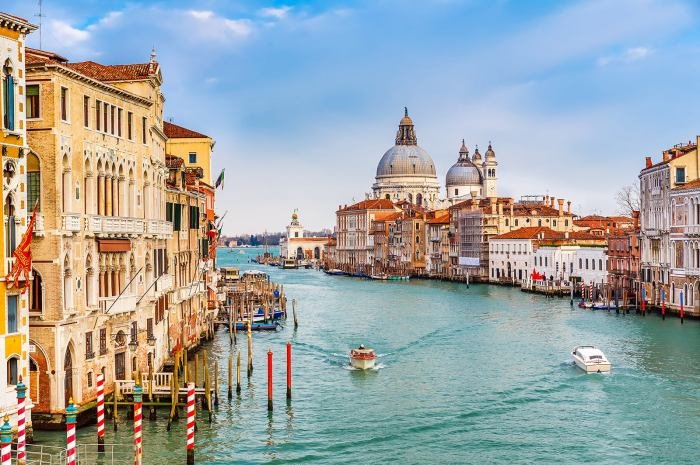
Urban aesthetics and design encompass the visual appeal and functionality of urban spaces, encompassing architecture, landscaping, public art, and the overall layout of a city. These elements work together to create a unique and engaging urban experience.
The Role of Architecture
Architecture plays a crucial role in shaping the aesthetic appeal of a city. It influences the skyline, street views, and overall character of urban spaces. Iconic buildings and architectural styles can become defining features of a city, attracting tourists and fostering a sense of pride among residents.
For example, the Art Deco architecture of Miami Beach, Florida, contributes to its vibrant and glamorous atmosphere.
The Importance of Landscaping, Urban beauty
Landscaping plays a vital role in enhancing the beauty and livability of urban environments. Parks, gardens, green spaces, and trees not only provide aesthetic appeal but also offer environmental benefits, such as reducing air pollution and mitigating the urban heat island effect.
Well-planned landscaping can create a sense of tranquility and improve the quality of life for residents. The extensive green spaces and gardens of Singapore, for example, contribute to its reputation as a “City in a Garden.”
The Impact of Public Art
Public art, ranging from sculptures and murals to installations and street art, can transform ordinary urban spaces into vibrant and engaging destinations. Public art can spark creativity, encourage community interaction, and enhance the cultural identity of a city. The street art scene in Buenos Aires, Argentina, for instance, is renowned for its vibrant murals and artistic expression, attracting tourists and artists from around the world.
The Significance of Urban Planning
Urban planning plays a crucial role in shaping the aesthetics and design of a city. It involves creating a comprehensive vision for the city’s development, taking into account factors such as transportation, infrastructure, and land use. Well-planned cities are often characterized by a harmonious balance between functional design and aesthetic appeal, fostering a sense of community and promoting sustainable urban development.
Urban beauty often lies in the unexpected details – a vibrant mural on a crumbling wall, a blooming flower pushing through concrete, or the aroma of freshly baked bread wafting from a local bakery. And just like those hidden gems, dark chocolate, with its rich, complex flavor, offers surprising health benefits, as explained in this article on why dark chocolate is good for health.
So, next time you’re exploring the city, take a moment to savor the simple pleasures, like a piece of dark chocolate, and appreciate the beauty that surrounds you.
The urban planning principles of Barcelona, Spain, for example, have resulted in a city with a strong sense of place, characterized by wide pedestrian walkways, vibrant public spaces, and a harmonious blend of old and new architecture.
Urban Beauty and Sustainability
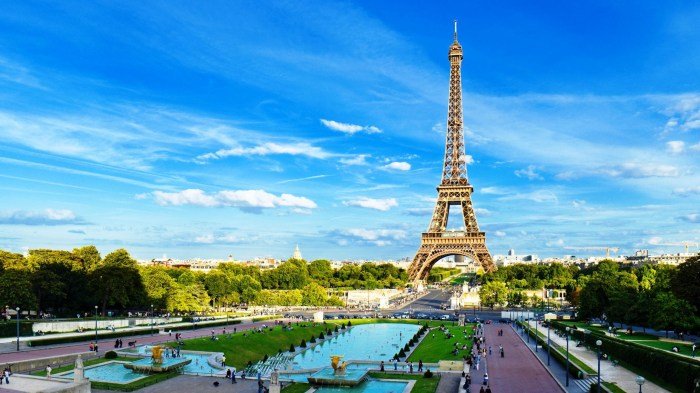
Urban beauty and sustainability are not mutually exclusive concepts; they are intricately intertwined. Sustainable practices, far from compromising a city’s aesthetic appeal, can actually enhance it, creating a more harmonious and livable environment. This section explores the relationship between urban beauty and sustainability, highlighting how green spaces, renewable energy, and eco-friendly infrastructure contribute to a city’s aesthetic charm.
Urban beauty is often found in the unexpected, from a vibrant street mural to a hidden garden oasis. For those seeking a touch of refined elegance, vinita’s beauty & threading studio offers a sanctuary of beauty services in the heart of the city.
Whether it’s a threading session or a relaxing facial, Vinita’s studio provides a personalized experience that enhances natural beauty, adding a touch of polish to the urban landscape.
Green Spaces and Urban Beauty
Green spaces, including parks, gardens, and urban forests, are vital for a city’s aesthetic appeal and contribute significantly to its sustainability.
- They provide a visual respite from the concrete jungle, offering a sense of tranquility and connection with nature.
- They improve air quality by absorbing pollutants and releasing oxygen, contributing to a healthier and more beautiful urban environment.
- Green spaces also act as natural cooling systems, mitigating the urban heat island effect, which can significantly enhance a city’s overall aesthetic appeal.
Renewable Energy and Urban Design
The integration of renewable energy sources, such as solar and wind power, into urban landscapes can enhance a city’s aesthetic appeal while promoting sustainability.
- Solar panels, when strategically incorporated into building designs, can create interesting architectural features, adding visual interest to the cityscape.
- Wind turbines, particularly those designed with aesthetics in mind, can be integrated into urban environments, contributing to a city’s unique skyline.
- The use of renewable energy sources also reduces reliance on fossil fuels, contributing to a cleaner and healthier urban environment, further enhancing its aesthetic appeal.
Eco-Friendly Infrastructure and Urban Beauty
Investing in eco-friendly infrastructure, such as green roofs, permeable pavements, and efficient public transportation systems, not only contributes to a city’s sustainability but also enhances its beauty.
- Green roofs, with their lush vegetation, provide a visual contrast to the surrounding concrete, adding a touch of nature to the urban landscape.
- Permeable pavements allow rainwater to infiltrate the ground, reducing runoff and improving air quality, while also creating visually appealing and diverse urban surfaces.
- Efficient public transportation systems, such as light rail and bike paths, encourage active transportation, reducing traffic congestion and air pollution, while also creating visually appealing and functional urban spaces.
The Human Element of Urban Beauty
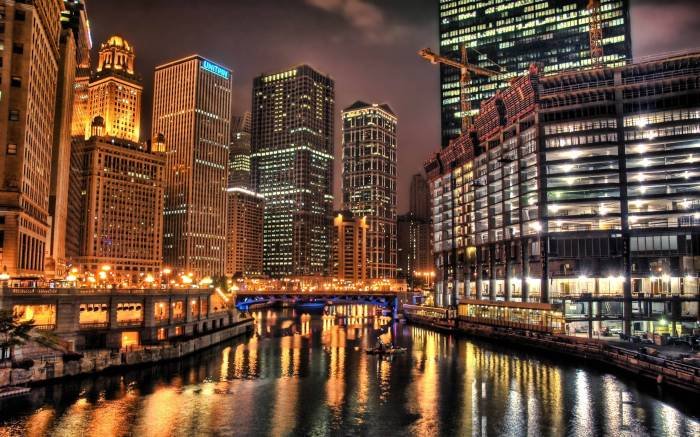
The beauty of a city is not solely defined by its architecture, infrastructure, or natural landscapes. It is also shaped by the people who inhabit it, their interactions, and the cultural tapestry they weave. A truly beautiful city embraces diversity and inclusivity, fostering a sense of belonging and enriching the urban experience for all.
The Role of Diversity and Inclusivity
Diversity and inclusivity are fundamental to creating a vibrant and beautiful urban environment. A city that welcomes people from different backgrounds, cultures, and walks of life is a city that thrives on its unique blend of perspectives, traditions, and experiences.
- Representation in Public Spaces: Public spaces should reflect the city’s diverse population. This includes featuring art, sculptures, and memorials that represent the contributions and stories of various communities. For example, a city with a large immigrant population could create a public art installation showcasing the history and culture of its immigrant communities.
- Accessible and Inclusive Design: Urban design should prioritize accessibility for all individuals, regardless of their physical abilities, age, or cultural background. This includes creating accessible pathways, ramps, and public transportation systems, as well as incorporating universal design principles in buildings and public spaces.
- Celebrating Cultural Diversity: Cities should actively celebrate their cultural diversity through festivals, events, and community gatherings. This creates opportunities for residents to learn about and appreciate different cultures, fostering a sense of unity and understanding.
Urban Beauty in Literature and Art
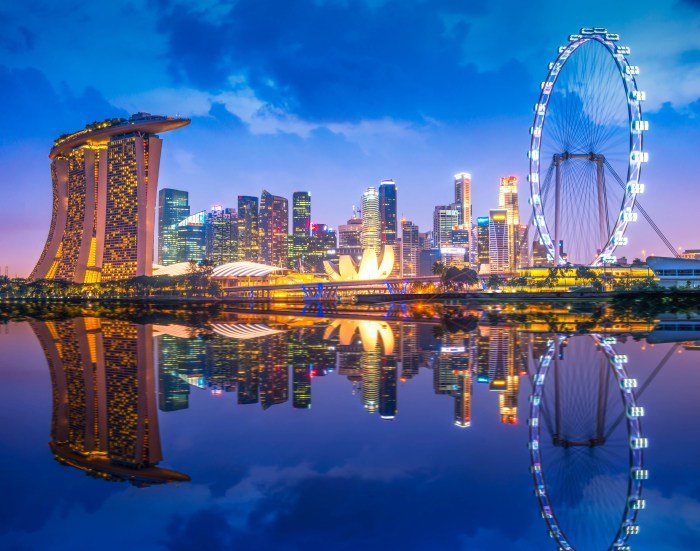
Urban beauty, with its intricate tapestry of human activity and architectural marvels, has captivated artists and writers for centuries. From the bustling streets of Victorian London to the towering skyscrapers of modern New York City, the urban landscape has served as a rich source of inspiration for creative expression.
This section delves into the fascinating interplay between urban beauty and literature and art, exploring how different artists and writers have captured its essence and the profound impact it has had on their work.
Urban Beauty in Literature
Literature provides a unique lens through which to experience the beauty of urban spaces. Writers have skillfully woven urban environments into their narratives, using vivid descriptions and compelling characters to illuminate the multifaceted nature of urban beauty.
- Charles Dickens, in his classic novel -Oliver Twist*, vividly portrays the squalor and poverty of Victorian London, but also highlights the resilience and beauty of the human spirit amidst the harsh realities of urban life. The bustling streets, crowded markets, and imposing buildings create a palpable atmosphere that transports the reader to the heart of 19th-century London.
- The works of American novelist, James Baldwin, explore the complexities of race, class, and identity in the urban landscape of Harlem. In his novel -Go Tell It on the Mountain*, Baldwin uses evocative language to depict the vibrant culture, struggles, and beauty of the African American community in New York City.
- More contemporary writers, such as Zadie Smith, continue to explore the intricacies of urban life in their works. In her novel -White Teeth*, Smith uses humor and sharp observation to capture the diverse cultural tapestry of London, highlighting the beauty that emerges from the interplay of different communities.
Urban Beauty in Visual Arts
Visual artists have long been captivated by the dynamic energy and visual splendor of urban environments. From the Impressionists’ depiction of Parisian streets to the contemporary urban landscapes of photographers and digital artists, urban beauty has been a recurring theme in art history.
- The Impressionist movement, led by artists like Claude Monet and Edgar Degas, revolutionized the way artists depicted urban life. Their paintings, characterized by their use of light and color, captured the fleeting moments of urban life, from the bustling streets of Paris to the vibrant social scenes of cafes and theaters.
- The urban landscape became a central theme for many 20th-century artists, including George Grosz and Otto Dix. Their works often focused on the social and political realities of urban life, highlighting the stark contrasts between wealth and poverty, and the impact of industrialization on urban environments.
- Contemporary urban art takes on a multitude of forms, from street art and graffiti to digital art and photography. Artists like Banksy and Shepard Fairey have used urban spaces as their canvas, transforming public spaces into powerful expressions of social commentary and artistic creativity.
The Impact of Urban Beauty on Creative Expression
The beauty of urban spaces has a profound impact on creative expression. Artists and writers are inspired by the dynamic energy, architectural diversity, and cultural richness of cities. They use their art to explore the complexities of urban life, capturing the beauty that emerges from the interplay of human activity and built environments.
“The city is a source of inspiration for artists of all disciplines. It is a place of constant change, a melting pot of cultures, and a stage for human drama. It is a place where beauty can be found in the most unexpected places.”
Unknown
The Future of Urban Beauty
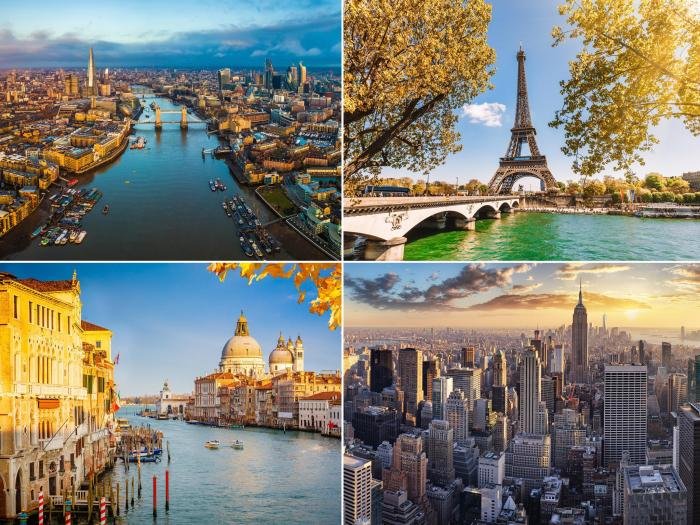
The concept of urban beauty is constantly evolving, influenced by technological advancements, shifting societal values, and a growing awareness of environmental concerns. As we look towards the future, we can envision urban spaces that are not only aesthetically pleasing but also sustainable, inclusive, and technologically advanced.
Emerging Technologies and Trends Influencing Urban Aesthetics
Emerging technologies and trends are shaping the future of urban aesthetics. These advancements offer new possibilities for creating dynamic, interactive, and responsive urban environments.
- Artificial Intelligence (AI) and Machine Learning (ML): AI and ML can be used to analyze urban data, such as traffic patterns, pedestrian movement, and environmental conditions, to optimize urban design and improve the flow of people and goods. This data-driven approach can lead to more efficient and aesthetically pleasing urban spaces.
- Smart Cities and Internet of Things (IoT): Smart city initiatives are integrating sensors, data analytics, and communication technologies to create interconnected urban environments. This interconnectedness can enhance urban beauty by creating dynamic lighting displays, responsive public spaces, and personalized urban experiences.
- Vertical Farming and Urban Agriculture: The integration of vertical farms and urban agriculture within cities can create a more sustainable and visually appealing urban landscape. These green spaces can provide fresh produce, reduce reliance on traditional agriculture, and contribute to a more vibrant urban environment.
- Biomimicry and Sustainable Materials: Biomimicry, the study of nature’s designs, can inspire innovative solutions for sustainable urban development. The use of bio-based materials and sustainable construction practices can create aesthetically pleasing and environmentally responsible urban spaces.
Last Recap
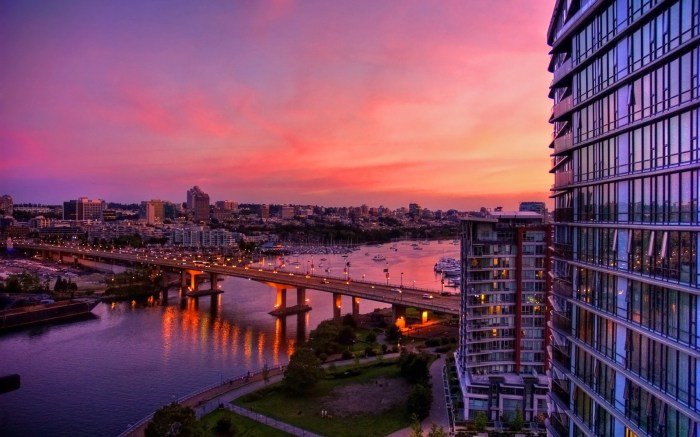
The future of urban beauty promises a harmonious blend of technological advancements and timeless principles. As we continue to navigate the complexities of urban life, the pursuit of beauty remains a guiding force, shaping our cities into spaces that inspire, connect, and sustain us.
By embracing diversity, fostering community, and prioritizing sustainability, we can create urban environments that are not only visually stunning but also socially and environmentally responsible, ensuring a brighter future for generations to come.
General Inquiries
What are some examples of cities renowned for their urban beauty?
Cities like Paris, Barcelona, Vienna, and Singapore are often cited for their architectural beauty, vibrant public spaces, and harmonious integration of nature.
How can technology contribute to urban beauty?
Smart city technologies can enhance urban beauty by optimizing lighting, managing traffic flow, and creating interactive public spaces.
What is the role of community in shaping urban beauty?
Community involvement is essential for creating a sense of place and identity. Public art projects, local festivals, and community gardens can all contribute to a city’s beauty and character.